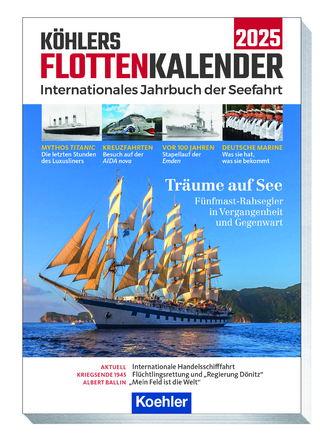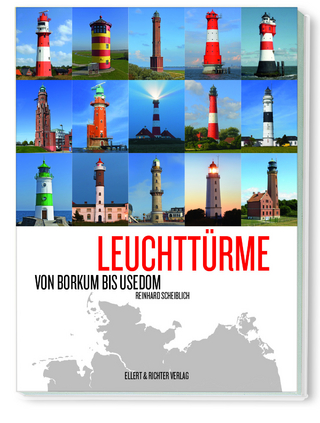
Sailing and Soaring
The Great Liners and the Great Skyscrapers
Seiten
2016
Fonthill Media Ltd (Verlag)
978-1-78155-368-8 (ISBN)
Fonthill Media Ltd (Verlag)
978-1-78155-368-8 (ISBN)
There is a great parallel between the great ocean liners and the great skyscrapers-a fascinating comparison between these two categories of design, engineering and creative genius. Bill Miller here in 'Sailing and Soaring' tells the wonderful story in words and photographs of the liners and skyscrapers from 1906 to 2010.
The story of the Great Liners begins on the Atlantic route between the Old World and the New, between Europe and the United States. It was the most prestigious, most progressive and certainly most competitive ocean liner run of all time. It was on the North Atlantic that the largest, fastest and indeed grandest passenger ships were created. In this book, William Miller concentrates for the most part on these Atlantic superliners. It has been a race, sometimes fierce, that has continued for well over a century. Smaller passenger ships, even ones of 30,000 and 40,000 tons, are for the most part left to other books. The story begins even earlier, in 1889, when Germany's Kaiser Wilhelm II visited his grandmother, Queen Victoria, and attended the British Naval Review at Spithead. The British were more than pleased to show off not only the mightiest naval vessels afloat, but the biggest passenger ships then afloat, namely the 10,000-ton 'Teutonic' of the White Star Line. These ships caught the Kaiser's royal eye. His enthusiasm, his determination and, assuredly, his jealousies were aroused. Her returned to his homeland determined that Germany should have bigger and better ships.The world must know, he theorized, that Imperial Germany had reached new and higher technological heights.
To the Kaiser and other envious Germans, the British had, quite simply, had a monopoly on the biggest ships long enough. British engineers and even shipyard crews were recruited, teaching German shipbuilders the key components of a new generation of larger ships. Shipyards at Bremen, Hamburg and Stettin were soon ready. It would all take eight years, however, before the first big German liner would be completed. She would be large enough and fast enough to be dubbed the world's first "super liner". She would only be the biggest vessel built in Germany, but the biggest afloat. The nation's most prominent shipowners, the Hamburg America Line and the North German Lloyd, were both deeply interested. It was the Lloyd, however, which rose first to the occasion. Enthusiastically and optimistically, the first ship was the first of a successive quartet. The illustrious Vulkan Shipyard at Stettin was given the prized contract. Triumph seemed to be in the air! The Kaiser himself went to the launching, on 3 May 1897, of this new Imperial flagship.Designed with four funnels but grouped in pairs, the 655-ft long ship was named 'Kaiser Wilhelm der Grosse', honoring the Emperor's grandfather.
With the rattle of chains, the release of the building blocks and then the tumultuous roar as the unfinished hull hit the water, this launching was the beginning of the Atlantic race for supremacy, which would last for some 70 years. Only after the first arrival of the trans-Atlantic jet in October 1958 would the race quiet down. The 'Kaiser Wilhelm der Grosse' was the great beginning, the start of a superb fleet of what has been dubbed "ocean greyhounds" and later aptly called the "floating palaces". Worried and cautious, the normally contented British referred to the brand new Kaiser as a "German monster".
The story of the Great Liners begins on the Atlantic route between the Old World and the New, between Europe and the United States. It was the most prestigious, most progressive and certainly most competitive ocean liner run of all time. It was on the North Atlantic that the largest, fastest and indeed grandest passenger ships were created. In this book, William Miller concentrates for the most part on these Atlantic superliners. It has been a race, sometimes fierce, that has continued for well over a century. Smaller passenger ships, even ones of 30,000 and 40,000 tons, are for the most part left to other books. The story begins even earlier, in 1889, when Germany's Kaiser Wilhelm II visited his grandmother, Queen Victoria, and attended the British Naval Review at Spithead. The British were more than pleased to show off not only the mightiest naval vessels afloat, but the biggest passenger ships then afloat, namely the 10,000-ton 'Teutonic' of the White Star Line. These ships caught the Kaiser's royal eye. His enthusiasm, his determination and, assuredly, his jealousies were aroused. Her returned to his homeland determined that Germany should have bigger and better ships.The world must know, he theorized, that Imperial Germany had reached new and higher technological heights.
To the Kaiser and other envious Germans, the British had, quite simply, had a monopoly on the biggest ships long enough. British engineers and even shipyard crews were recruited, teaching German shipbuilders the key components of a new generation of larger ships. Shipyards at Bremen, Hamburg and Stettin were soon ready. It would all take eight years, however, before the first big German liner would be completed. She would be large enough and fast enough to be dubbed the world's first "super liner". She would only be the biggest vessel built in Germany, but the biggest afloat. The nation's most prominent shipowners, the Hamburg America Line and the North German Lloyd, were both deeply interested. It was the Lloyd, however, which rose first to the occasion. Enthusiastically and optimistically, the first ship was the first of a successive quartet. The illustrious Vulkan Shipyard at Stettin was given the prized contract. Triumph seemed to be in the air! The Kaiser himself went to the launching, on 3 May 1897, of this new Imperial flagship.Designed with four funnels but grouped in pairs, the 655-ft long ship was named 'Kaiser Wilhelm der Grosse', honoring the Emperor's grandfather.
With the rattle of chains, the release of the building blocks and then the tumultuous roar as the unfinished hull hit the water, this launching was the beginning of the Atlantic race for supremacy, which would last for some 70 years. Only after the first arrival of the trans-Atlantic jet in October 1958 would the race quiet down. The 'Kaiser Wilhelm der Grosse' was the great beginning, the start of a superb fleet of what has been dubbed "ocean greyhounds" and later aptly called the "floating palaces". Worried and cautious, the normally contented British referred to the brand new Kaiser as a "German monster".
Known as "Mr Ocean Liner," William H. Miller has written over 80 books about passenger ships. He has covered the liners large and small, in war and peace, and as collectibles and in post card form. Miller has also penned ovrer 1000 articles about ships and sea travel. He has been a popular guest lecturer aboard such liners as the QE2, QUEEN MARY 2, ROTTERDAM & CRYSTAL SERENITY for over 30 years. Born in Hoboken, New Jersey, just across from the great liner piers of New York City, Miller has appeared in numerous TV documentaries, & news programs and himself has been the subject of a 60-min documentary called "Mr Ocean Liner". Miller has been the recipient of numerous maritime awards.
| Erscheinungsdatum | 24.01.2016 |
|---|---|
| Verlagsort | Toadsmoor Road |
| Sprache | englisch |
| Themenwelt | Natur / Technik ► Fahrzeuge / Flugzeuge / Schiffe ► Schiffe |
| Geisteswissenschaften ► Geschichte | |
| Technik ► Architektur | |
| ISBN-10 | 1-78155-368-8 / 1781553688 |
| ISBN-13 | 978-1-78155-368-8 / 9781781553688 |
| Zustand | Neuware |
| Haben Sie eine Frage zum Produkt? |
Mehr entdecken
aus dem Bereich
aus dem Bereich
internationales Jahrbuch der Seefahrt
Buch | Softcover (2024)
Koehler in Maximilian Verlag GmbH & Co. KG
23,95 €


